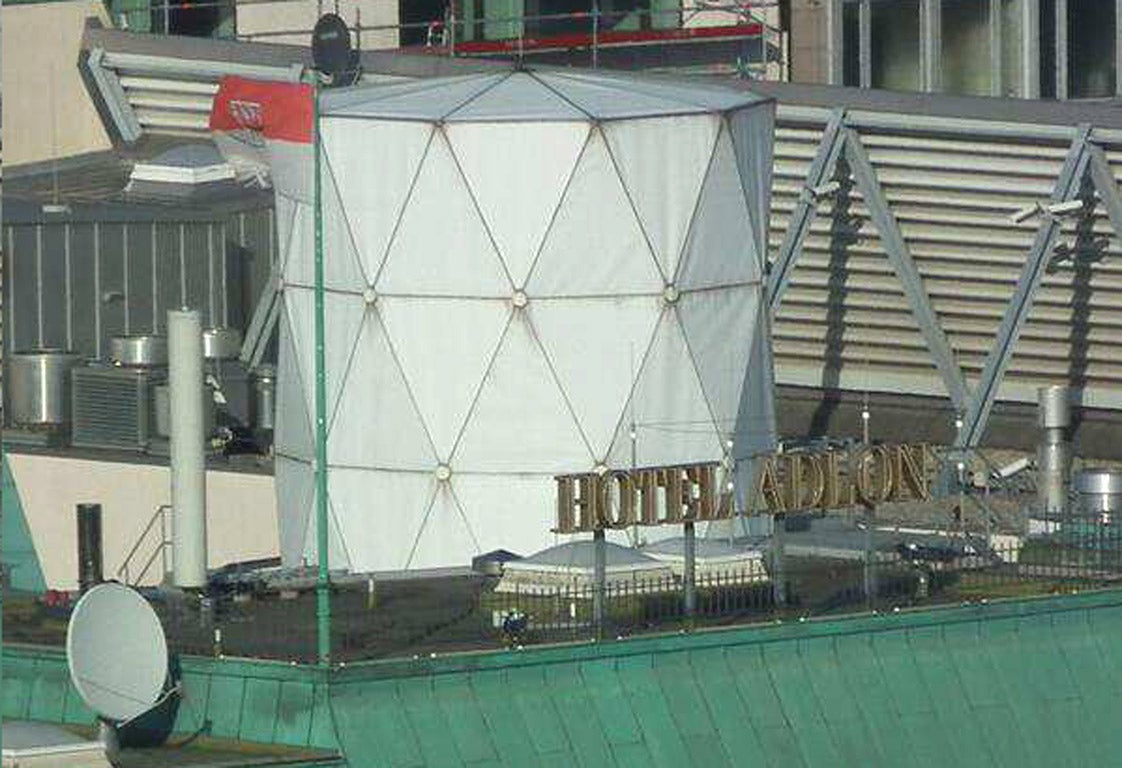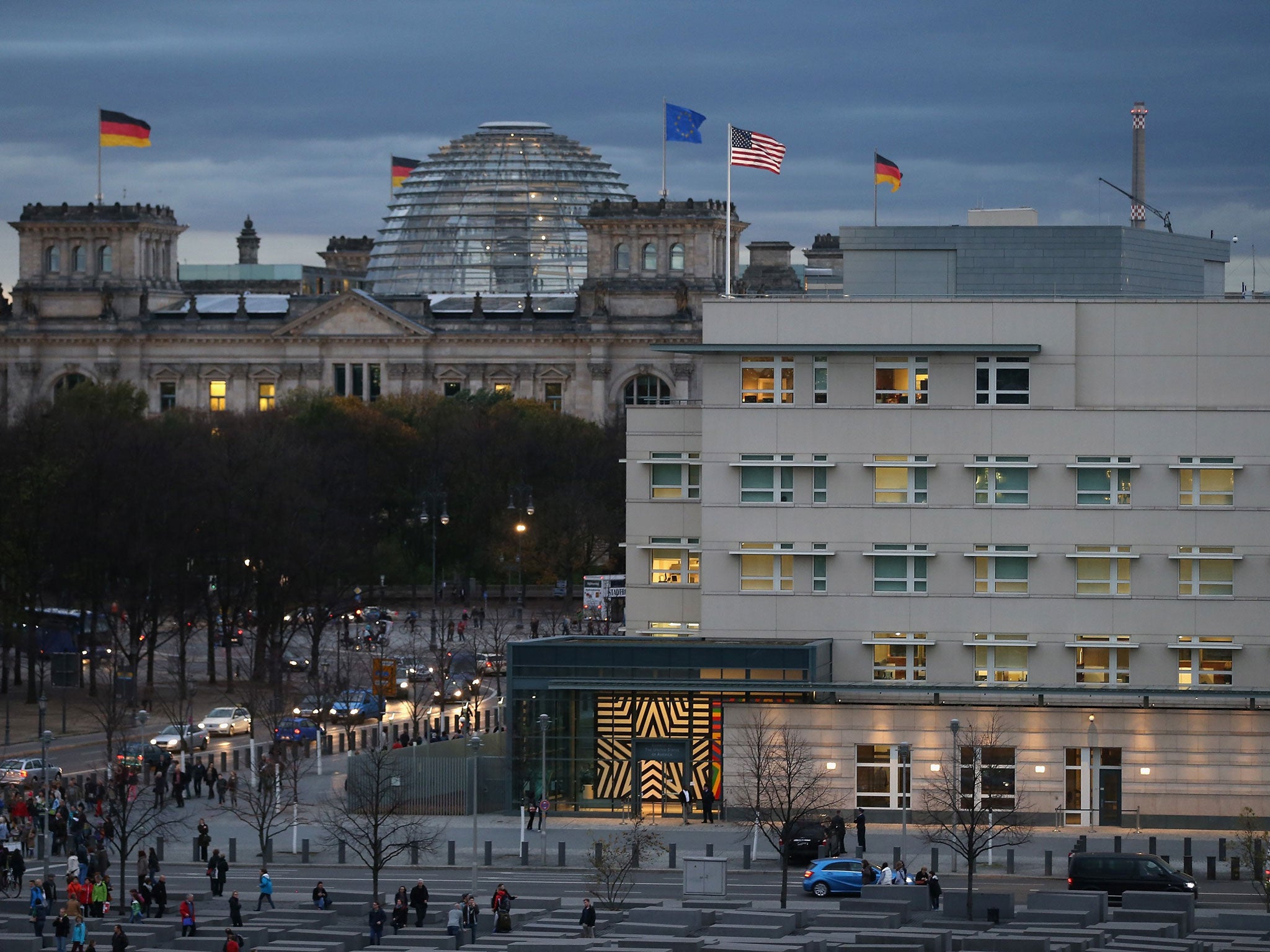Revealed: Britain's 'secret listening post in the heart of Berlin'
Claims that GCHQ has maintained spying operations even after US pulled out

Your support helps us to tell the story
From reproductive rights to climate change to Big Tech, The Independent is on the ground when the story is developing. Whether it's investigating the financials of Elon Musk's pro-Trump PAC or producing our latest documentary, 'The A Word', which shines a light on the American women fighting for reproductive rights, we know how important it is to parse out the facts from the messaging.
At such a critical moment in US history, we need reporters on the ground. Your donation allows us to keep sending journalists to speak to both sides of the story.
The Independent is trusted by Americans across the entire political spectrum. And unlike many other quality news outlets, we choose not to lock Americans out of our reporting and analysis with paywalls. We believe quality journalism should be available to everyone, paid for by those who can afford it.
Your support makes all the difference.Concerns were raised tonight that Britain operates a top-secret listening post from its Berlin embassy to eavesdrop on the seat of German power.
UPDATE:
Documents leaked by the US National Security Agency whistleblower Edward Snowden show that GCHQ is, together with the US and other key partners, operating a network of electronic spy posts from diplomatic buildings around the world, which intercept data in host nations.
An American intercept “nest” on top of its embassy in Berlin – less than 150 metres from Britain’s own diplomatic mission – is believed to have been shut down last week as the US scrambled to limit the damage from revelations that it listened to mobile phone calls made by Chancellor Angela Merkel.
But the NSA documents, in conjunction with aerial photographs and information about past spying activities in Germany, suggest that Britain is operating its own covert listening station within a stone’s throw of the Bundestag, Germany’s parliament, and Ms Merkel’s offices in the Chancellery, using hi-tech equipment housed on the embassy roof.
The potentially toxic allegation that Britain has a listening station in the capital of a close European Union ally will test relations between London and Berlin only days after the row between Germany and the US about its own clandestine activities. Jan Albrecht, an MEP for Germany’s Green Party and a leading campaigner on privacy and data protection, told The Independent: “If GCHQ runs a listening post on the top of the UK’s Berlin embassy, it is clearly targeting politicians and journalists. Do these people pose a threat?
“The EU has asked David Cameron’s Government to explain the activities of GCHQ in Europe but it has declined to do so, saying it does not comment on activities in the interest of national security. This is hardly in the spirit of European co-operation. We are not enemies.”
Asked to respond to the concerns last night, Mr Cameron’s official spokesman said: “We don’t comment on intelligence questions.”
Infrared images taken by a German television station, ARD, appear to show that the US embassy spying facility, housed in an anonymous rooftop building, has now been shut down after an incendiary clash in which Mrs Merkel told President Barack Obama it was “just not done” for friendly nations to spy on each other.
The heat signature from the structure dropped dramatically last week in the immediate aftermath of the conversation, and equipment inside has not been detected as having been turned on since.
The eavesdropping base, concealed in a box-like structure with special windows made of fibreglass which are opaque to light but allow radio signals to pass unhindered, was run jointly by CIA and NSA agents in a top-secret unit called the Special Collection Service (SCS). Despite the row the German authorities appear not to have noticed – or protested about – a potential parallel and linked surveillance unit on top of the British embassy.

According to one NSA document, Washington recently closed some of the 100 SCS locations it operates in embassies around the world and transferred some of the work to GCHQ, which is based in Cheltenham. In 2010, the SCS was known to operate 19 facilities in Europe, including stations in both Berlin and Frankfurt.
Documents shown to The Independent state that the operation uses equipment hidden within the fabric of diplomatic buildings and only a small number of personnel operating under diplomatic cover whose “true mission” is unknown even to the majority of their colleagues.
Aerial photographs of the British embassy in Berlin show a potential eavesdropping base enclosed inside a white, cylindrical tent-like structure which cannot be easily seen from the streets. The structure has been in place since the embassy, which was built following the reunification of Germany, opened in 2000.
The structure bears a striking resemblance to spying equipment used in GCHQ’s Cold War listening post in West Berlin at the now-abandoned Teufelsberg or “Devil’s Mountain” site, which was used to intercept East German and Soviet communications.

Equipment within the embassy unit would be capable of intercepting mobile phone calls, wi-fi data and long-distance communications across the German capital, including the adjacent government buildings such as the Reichstag and the Chancellery clustered around the Brandenburg Gate.
Last night GCHQ officials refused to discuss ongoing security matters.
Such is the critical importance of the network of embassy spying bases – the US version of which the NSA has codenamed “Stateroom” – that the NSA and the CIA have built a mock embassy-style site in woodland outside Washington DC to test their technology and train operatives.
Satellite images of the site in Maryland also show a white cylindrical structure in the grounds of the facility similar to the one on the roof of Britain’s Berlin embassy.
The NSA documents provided by Mr Snowden state that Stateroom-type operations are run by the US, Britain, Canada and Australia. Together with New Zealand, the countries form the “Five Eyes” at the core of an international eavesdropping coalition.

The NSA document outlining Stateroom describes it as “covert SIGINT [signals intelligence] collection sites located in diplomatic facilities abroad... [including] SCS (at US diplomatic facilities) and government communications headquarters (at British diplomatic facilities)”.
The briefing underlines the clandestine nature of the operation, adding: “These sites are small in size and in the number of personnel staffing them. They are covert, and their true mission is not known by the majority of the diplomatic staff at the facility where they are assigned.”
The “concealed collection system” within the embassies utilises “sheds” or structures with fake windows. The document said: “Collection equipment on a building is concealed so as not to reveal SIGINT activity... antennas are sometimes hidden in false architectural features or roof maintenance sheds.”
German and US diplomatic relations have fallen to an unprecedented low since evidence emerged that the personal mobile of Mrs Merkel, who is known to conduct sensitive government business by phone and text message, was targeted by SCS. Intelligence officials from Germany are now in Washington negotiating an end to mass surveillance on German territory as well as a formal pact not to conduct spying operations on friendly nations. But any suggestion that Britain could also have intercepted the calls of German politicians or officials – even if only as part of a much wider sweep of the German capital – would prove damaging.
A separate leaked SCS document states that Stateroom and other facilities target mobile phones or wi-fi networks. The location of any equipment within the British embassy would make it unlikely that data from Mrs Merkel’s residence and offices would not have been collected.
The secret history: How Britain bugged the Soviets
Secret bugging operations similar to the British and American Berlin embassy operations have been making the news for more than 40 years.
In 1971, American news columnist Jack Anderson reported that NSA and GCHQ were successfully monitoring Soviet leaders’ radio links from Russian-made Zil limousines, producing streams of information about foreign policy and military intentions – but also revealing that the Soviet leaders “banter and bicker … and gossip”. “The leaders … complain about their ailments like old maids,” he wrote.
As with the Snowden leaks, at the time the NSA claimed that the Anderson leak caused the Russians to shut down their use of limo phones.
This was not true – the Soviets just went on chattering. On 26 May 1972, according to released US documents, the embassy suites produced information that was vital to securing the East-West agreement not to use anti-missile missiles.
The Russians’ real response to the revelation was to blast both embassies with high intensity radio signals, in a failed attempt to jam the receiving equipment. The radio onslaught provoked concerns for the health and safety of both diplomats and spies.
DUNCAN CAMPBELL
Join our commenting forum
Join thought-provoking conversations, follow other Independent readers and see their replies
Comments